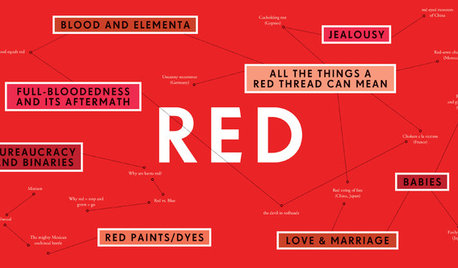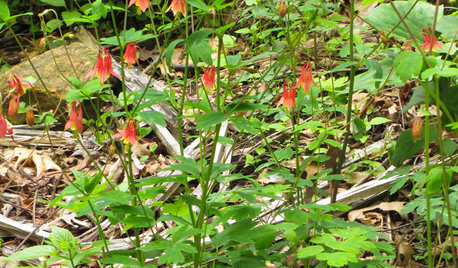What do hungry red worms look like?
JamesMarconnet
12 years ago
Related Stories

GARDENING GUIDESHouzz TV: Make a Worm Bin for Rich Soil and Happy Plants
A worm-powered compost bin that can fit under a sink turns food scraps into a powerful amendment for your garden. Here’s how to make one
Full Story
COLORColor Feast: When to Use Red in the Dining Room
It awakens appetites and spurs conversations, but too much is like a second helping of pie. Find the perfect balance of dining room red here
Full Story
COLORWhy My Son’s Room Will Be Red: An Expert Weighs In on Colors for Baby
Historical facts, trend recaps and enthusiastic support for painting your nursery any darn color you like
Full Story
KITCHEN DESIGNKitchen Color: 15 Ravishing Red Backsplashes
Bring some zing to your kitchen with a backsplash of ruby-colored tiles or back-painted glass
Full Story
FLOWERS AND PLANTSRoll Out the Welcome Mat for Hummingbirds With Red Columbine
Grow Aquilegia canadensis in eastern perennial gardens or informal woodland plantings for its delicate foliage and uncommon red flowers
Full Story
GARDENING GUIDES5 Red Roses to Stir Garden Passions
Show your devotion to color, scent and more with these regal landscape beauties
Full Story
PRODUCT PICKSGuest Picks: A Red and Green Christmas
Take a cue from classic Christmas movie 'Home Alone' and outfit the house with shades of red and green
Full Story0

GARDENING GUIDESOh, Deer! 10 Native Flowers That Stand Up to the Herds
Keeping a garden amid hungry deer can be hard, but these plants should fare well
Full Story
GARDENING GUIDESTop 12 Summer-Blooming Perennials for Deer-Resistant Drama
Can you have garden color, fragrance and exciting foliage with hungry deer afoot? These beauties say yes
Full Story
GARDENING GUIDESGreat Design Plant: Knock Out Roses
As glorious as their high-maintenance kin for a fraction of the work, Knock Out roses make even beginners look like garden stars
Full Story





equinoxequinox
yolos - 8a Ga. Brooks
Related Professionals
Barrington Hills Landscape Architects & Landscape Designers · Jackson Landscape Contractors · Brooklyn Park Landscape Contractors · Indio Landscape Contractors · Ringwood Landscape Contractors · Tustin Landscape Contractors · Chicago Ridge Landscape Contractors · Eastlake Landscape Contractors · Laguna Beach Stone, Pavers & Concrete · Ashburn General Contractors · Greenville General Contractors · Jackson General Contractors · Markham General Contractors · River Forest General Contractors · Avenal General ContractorsWorms4Tracy
JamesMarconnetOriginal Author
JamesMarconnetOriginal Author
PeterK2